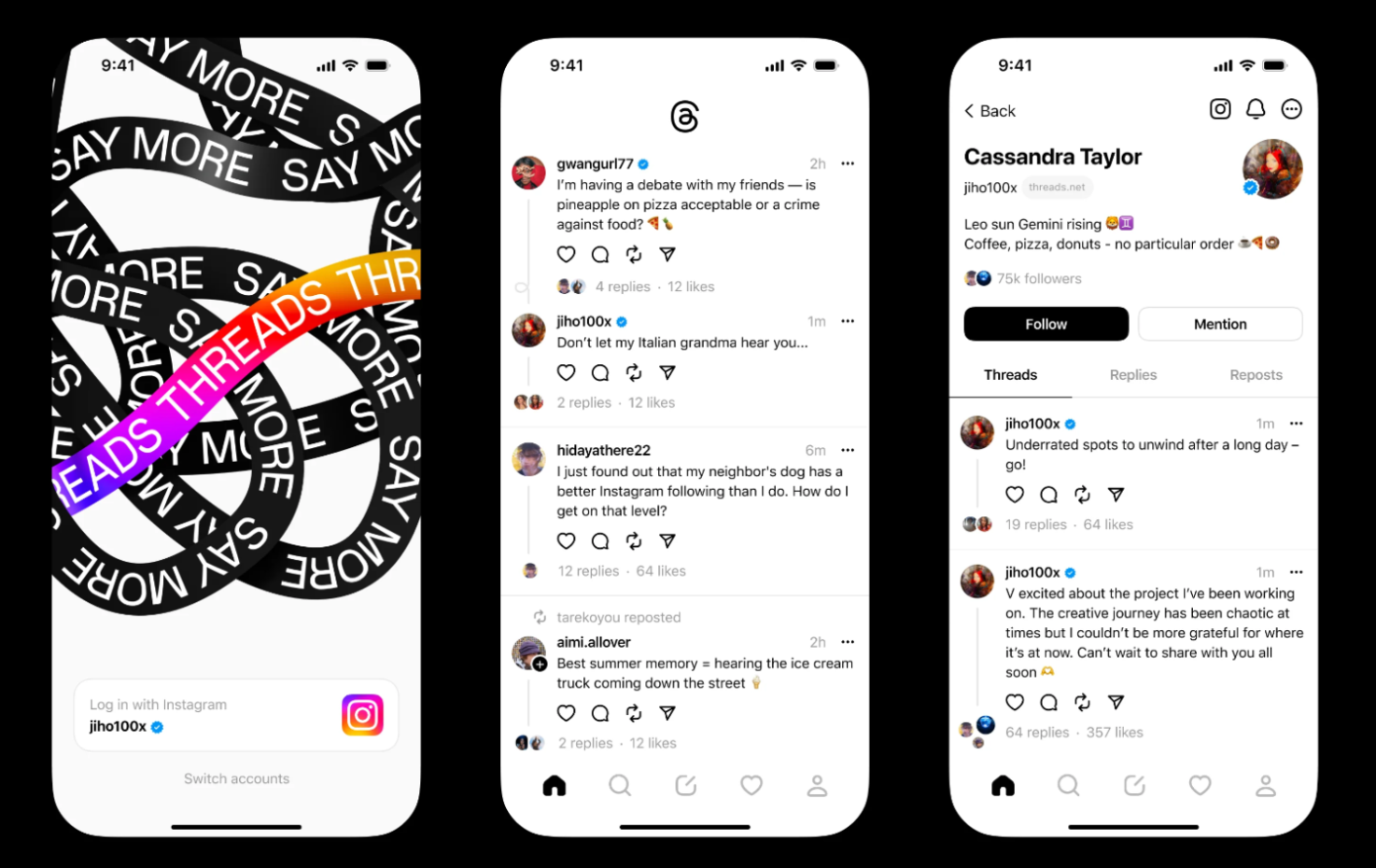Threads is officially live! Meta’s latest app has been branded a ‘Twitter killer.’
It’s scaling quickly, but do you need it in your higher education marketing mix?
After months of speculation, Threads, a text-based conversation platform, is officially live across more than 100 countries and available for both iOS and Android.
Meta’s latest app has been branded a ‘Twitter killer’, and its launch is certainly causing a social media stir.
Closely modeled on Twitter visually, it has been described as a copycat product, launching at the perfect time in terms of Twitter frustrations (spam, bots, tweet limiting).
Twitter is already considering legal action, with Elon Musk saying, “Competition is fine, cheating is not,” and stating that ex-Twitter staff helped to create Threads.
The functionality and design certainly do feel familiar!
But is it time to jump on board or just one to keep an eye on for your institution?
Here’s a short round-up of everything you need to know.
What is Threads?
Threads is a new app built by Meta (Instagram) for sharing real-time text updates and joining public conversations.
Currently, it’s a separate app from Instagram, but you have the option to follow the same accounts as your Instagram account.
Conversely, it also means that you don’t automatically get all your Instagram followers to migrate over, which means you have to build your audience all over again.
Posts can be up to 500 characters long and can include:
- Links
- Photos
- Videos up to 5 minutes long
- @ mentions (just like Twitter) to someone else’s account
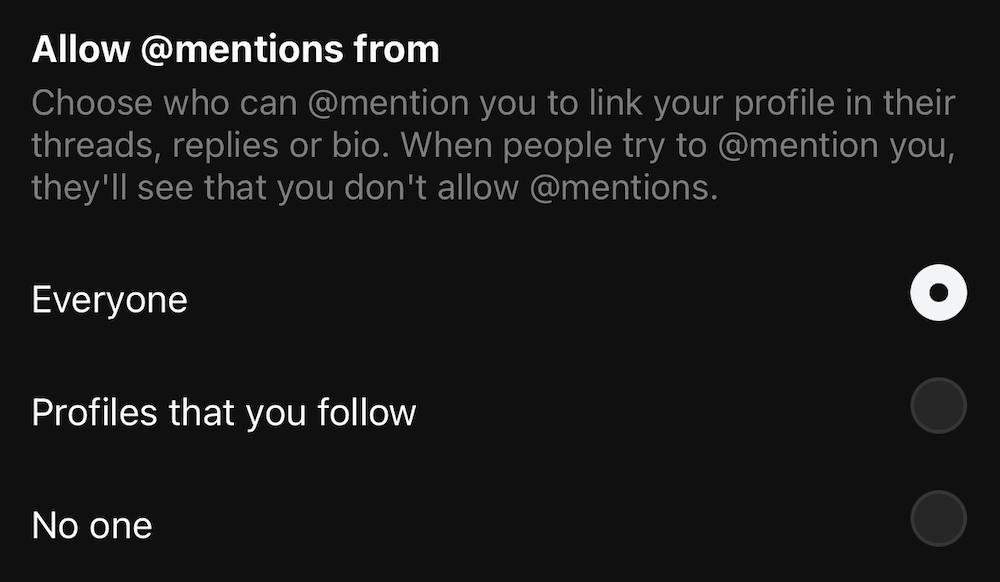
It’s easy to use and works very much like Twitter. Text conversations are over posts (“threads”) that are text conversations, and you can reply to others' posts as well as retweet or quote them (‘reposts’).
Screenshot from Instagram’s announcement
What’s the onboarding process like?
Onboarding is incredibly simple, which in part explains the rapid update.
If you or your institution already has an Instagram account, you (or the admin in the case of the university) can create a Threads account with the same details in seconds.
However, it’s worth noting that it’s not so easy to leave Threads!
While users can temporarily deactivate their profiles, actually deleting your Threads profile is only possible by deleting your Instagram account.
You can choose to make your Threads account public or private, and so far, there are no ads (but it’s early days…).
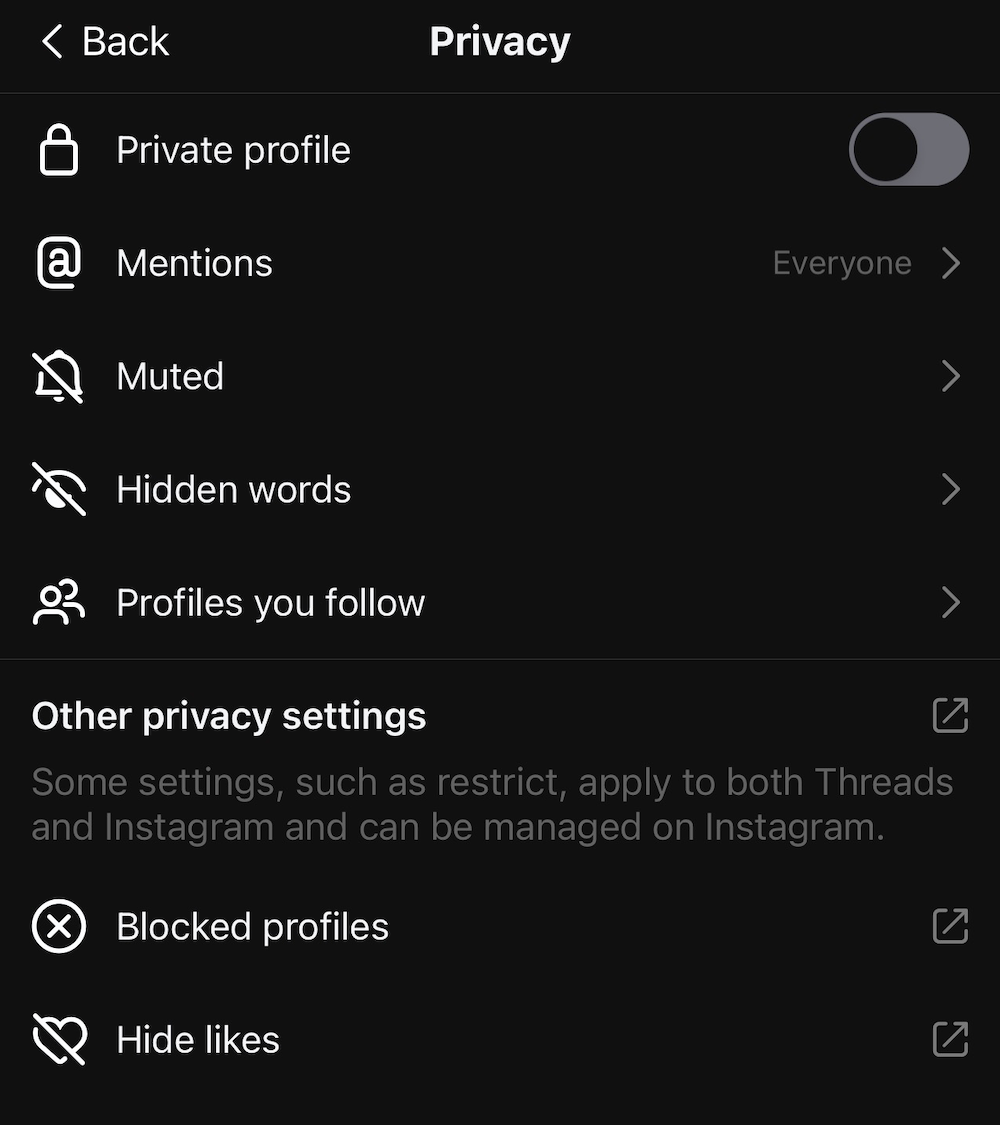
Who’s already on Threads…
In the first week after its launch, it has already amassed a user base of over 100 million users.

Screenshot of Mark Zuckerberg’s Threads post
To put that into perspective, it took Twitter 9 months, Instagram 19 months, and Facebook three years to achieve the same milestone.
Within the first two days, it had received 70 million sign-ups.
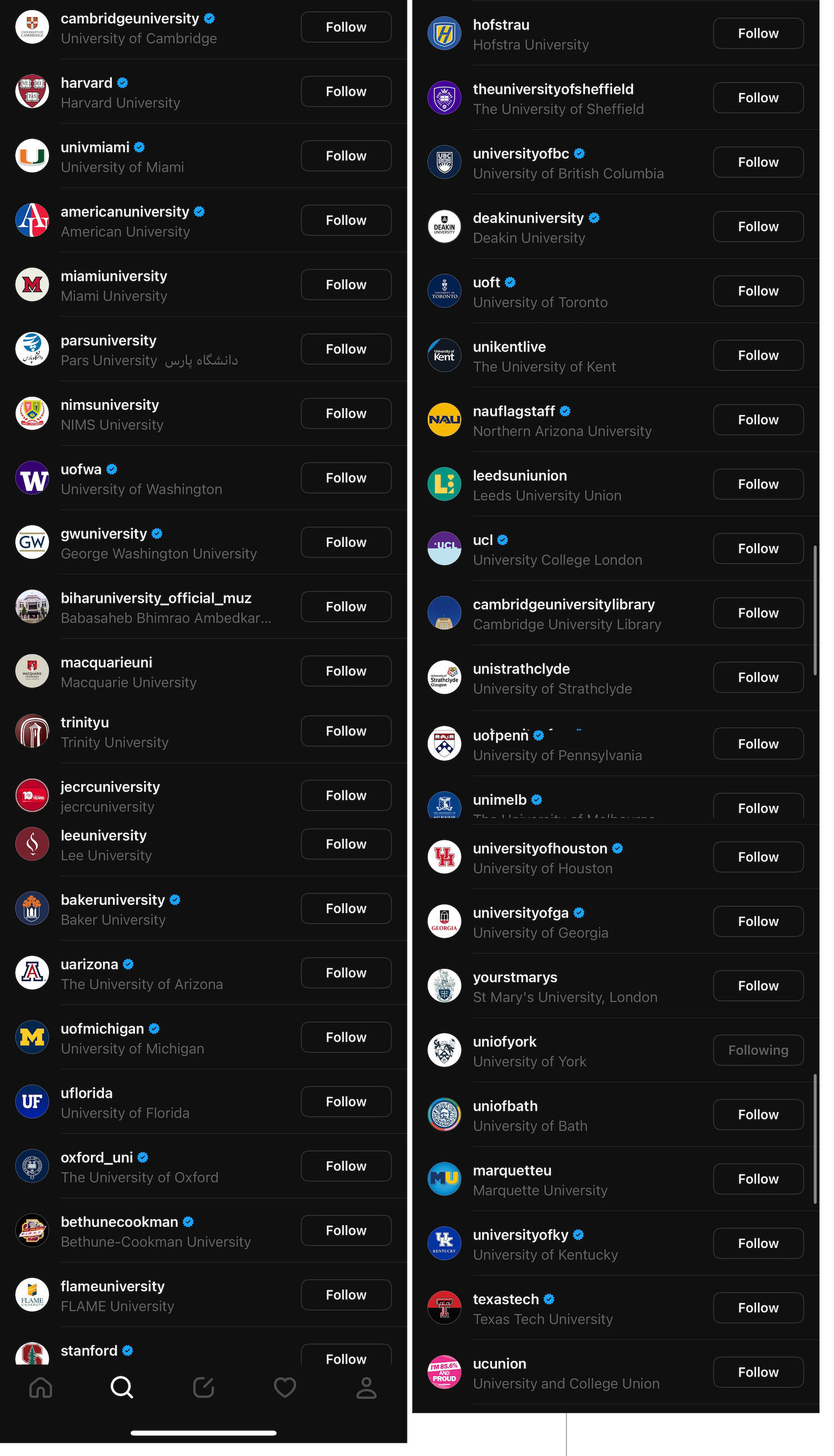
A selection of universities already on Threads
Many universities, including Harvard University and George Washington University, and many others in the US, and Oxford University, The University of Edinburgh, and 30 more in the UK, are already on-board and trying it out with a quick initial post or two.
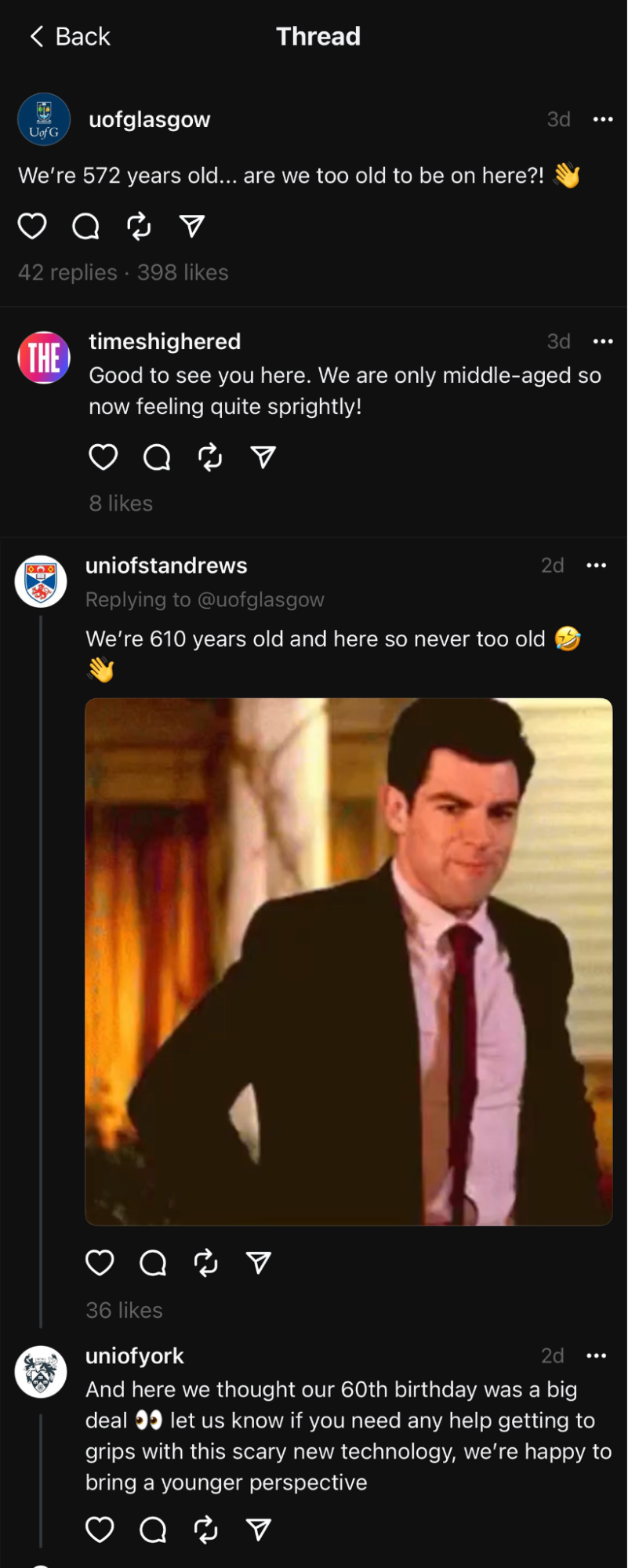
University of Glasgow, University of St Andrews, and University of York are already in on the Threads action welcoming each other to this new app
…and who’s not on Threads
Another god question to ask is, who’s not on Threads?
For now, Threads isn’t available in the EU.
Tech journalists have bemoaned the privacy issues, especially as it imports data from Instagram accounts (and it’s currently not possible to unlink them once they’re connected).
Meta has already run foul of Europe’s General Data Protection Regulation (GDPR) directives, and has been fined $1.3 billion for not upholding GDPR directives and shipping users’ personal information to the US.
And only a few days ago, nearly simultaneously to the Threads launch, Meta lost its case against anti-trust regulators in Germany investigating privacy breaches.
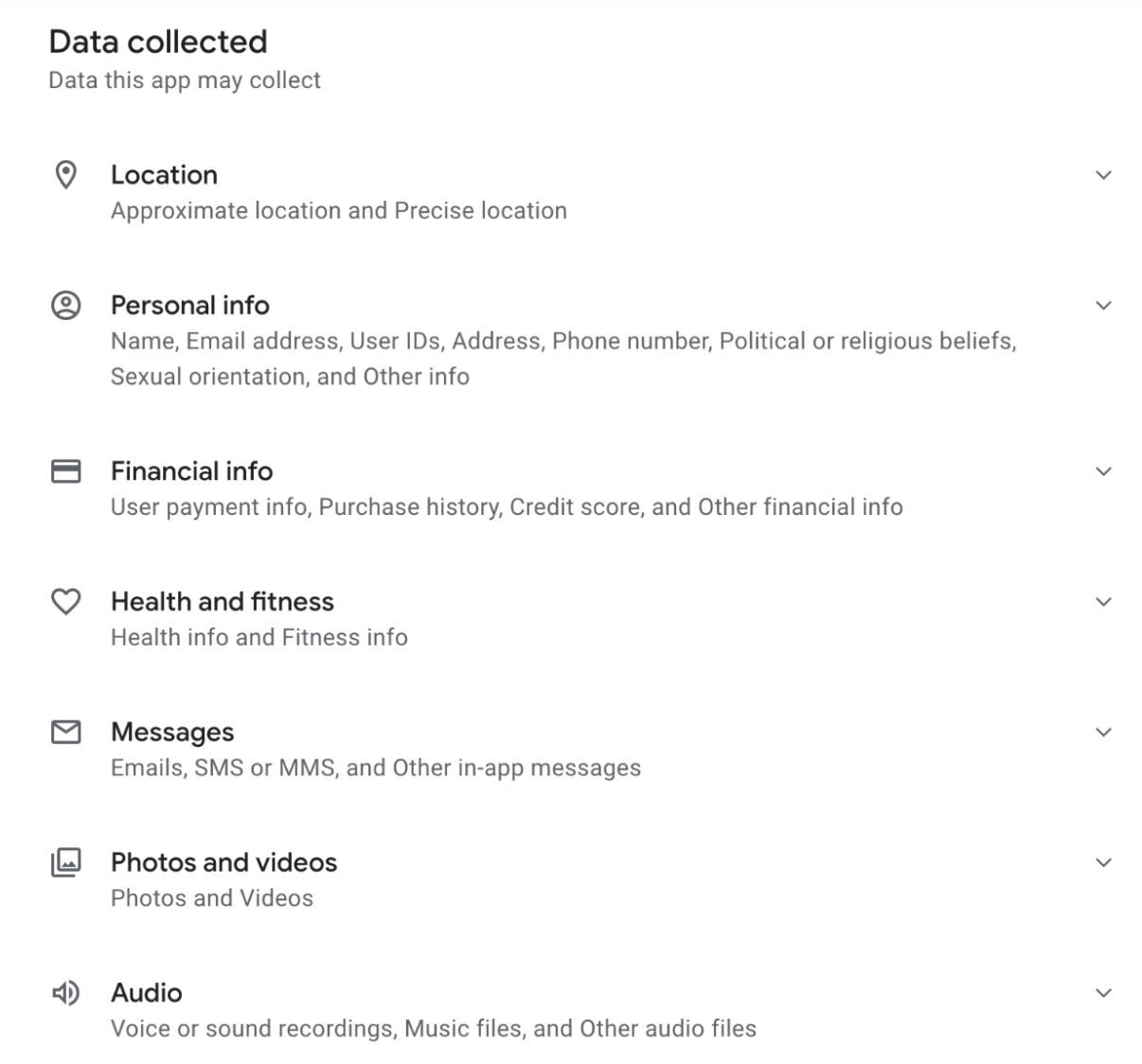
Threads’ Data collected
Meta is apparently in discussion with the European Commission and more guidance will be offered in the autumn. The question will remain if the app will respect Europe’s strict GDPR requirements.
Our team’s first impression
Our team’s first impressions of the platform are positive, with some of our team members saying it’s like the earlier days of Twitter and nicely designed.
The feed includes conversations posted by anyone you follow, along with recommended content based on Meta’s algorithm. (But you can’t currently choose to only see posts from accounts you’ve chosen: the algorithm does this for you.)
There’s also no way to make your feed ordered chronologically — instead, it’s organized by what the Threads algorithm thinks you might find most interesting.
Threads can easily be shared with your Instagram stories.
You can also easily invite people in your contacts to follow you.
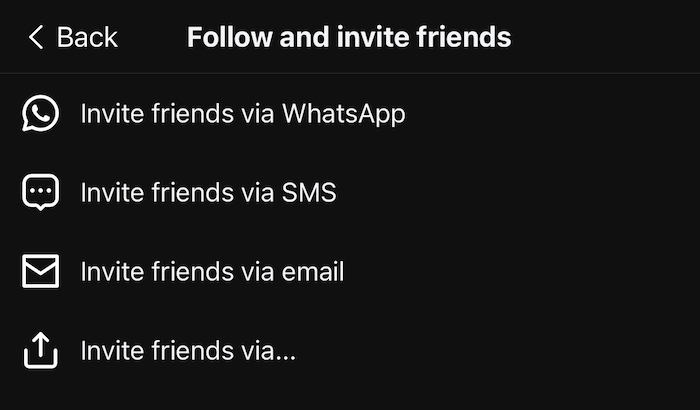
But unlike Twitter, you can’t currently search for trending topics using hashtags and you can’t edit your posts after they’re published.
And for now, Threads also isn’t available on the web like Twitter is—it’s only available as an app.
That could be a big minus if you prefer to launch content with your computer. However, you can read threads via links to conversations. Web access, though, is likely to be in the plans over at Meta.
What else is unique in comparison to Twitter?
Soon Threads will be compatible with ActivityPub, an open social networking protocol established by the World Wide Web Consortium (W3C), the body responsible for the open standards that power the modern web (including Mastodon).
The aim is to give users more control over their content and the ability to transfer content between service providers and to interoperate with other apps such as Tumblr.
Meta also plans to enable developers to build new features and user experiences for Threads which could accelerate the pace of innovation and experimentation.
This decentralized approach is a confident play by Meta and demonstrates a very different strategy from Twitter.
Some notes to consider
- The uptake has been rapid, but whether that will begin to drop off in the coming days is hard to predict.
- It’s also too early to say yet what impact Threads will have in the social media space, but it will be interesting to see if it grabs some of the current share of attention, taking time away from Instagram itself, Twitter, and other channels—or if the total time spent on social media simply goes up again.
- However, Threads certainly does have some huge things going for it behind the scenes.
- Meta, for instance, has been collecting data and aggregating it from Facebook and Instagram for a long, long time and knows its users incredibly well.
- That means it can hit the ground running in terms of tailoring content to users intelligently to augment the feed you receive from your connections; the algorithm is already very advanced.
- It also has advertising technology ready to roll from its other social media platforms, so it could turn on monetization measures at any time it chooses.
- This also means the quality of targeting will be impressive right from the start.
Should your higher education institution join Threads?
The University of Coventry cheekily quipped, ‘swapping from Twitter to Threads—just as easy as swapping to Cov Uni through Clearing when you realise it’s the better option.’
It’s going to be a very interesting ‘new’ social media channel to follow—and how it develops remains to be seen. But so far, there’s been good uptake in the space left by Twitter that no other social media app or channel has yet managed to fill.
But before incorporating Threads into your social media marketing mix, it’s important to ask yourself two key questions:
- Does your institution have the capacity to create content for a new social media platform
- Are your target audiences there to see it yet?
Clearly, the answers to those questions are going to change over time.
For now, if you’re dissatisfied with Twitter or simply want to try something new, it might be worth registering the account and putting out a first post or simply monitoring how other institutions begin to use it.
Have you downloaded it yet? What do you think?
Let us know on our social media channels or in the posts below.
 |
 |
 |
|---|

:format()//media/Threads-Instagram-for-Higher-Education---RQ.png)
